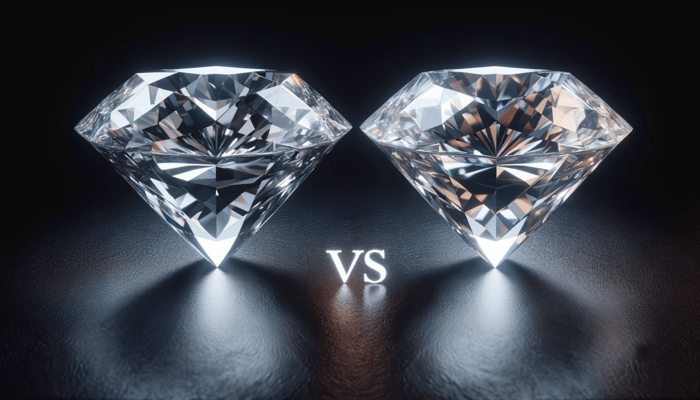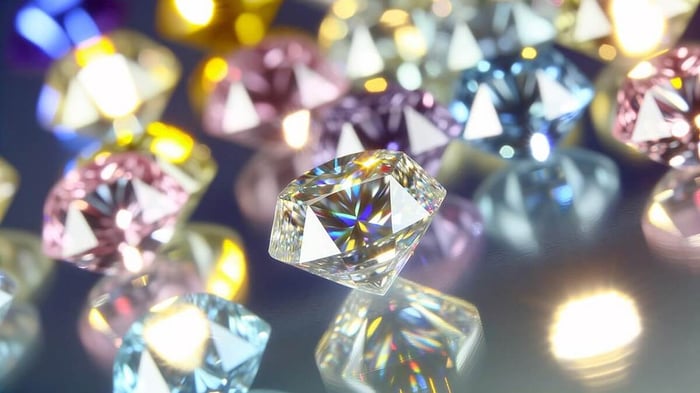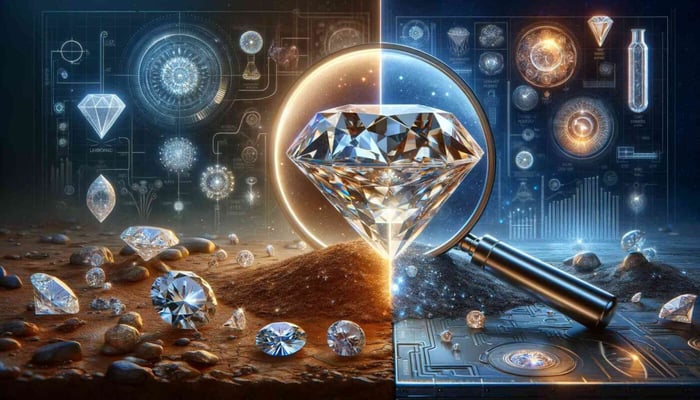In the commoditized world of precious gemstones, the ethics behind the choices we make often go unnoticed. The decision between lab-grown, natural, or antique diamonds may seem largely aesthetic or financial, but it is indeed a complex ethical choice.
Each of these selections carries with it a unique set of ecological, economic, and social implications that warrant careful consideration. From the innovative technologies producing lab-grown diamonds to the historical allure and sustainable appeal of antique diamonds and the socio-economic impact of the natural diamond industry, there is much to dissect.
This article will unravel these aspects to provide a comprehensive understanding of which diamond choice can be deemed the most ethical.
Key Takeaways About Lab-Grown, Natural or Antique Diamonds
• Lab-grown diamonds are often seen as the most ethical and sustainable choice due to their controlled production process and lower environmental impact.
• However, there are risks associated with lab-grown diamonds, such as the lack of assurance on workers' rights and the true environmental cost of production.
• Natural diamonds, while more expensive and rare, provide enormous socio-economic benefits to developing countries and hold their value due to supply and demand.
• Genuine antique diamonds cut by hand in the 1800s or the early 1900s, ethically sourced and fully repurposed, can offer a high return on investment.
Understanding Lab-Grown Diamonds
To fully grasp the concept of lab-grown diamonds, it is crucial to delve into their origin, the processes involved in their creation, and the ethical considerations surrounding their production. Produced in a commercial factory, lab-grown diamonds are created in a controlled environment using advanced technology and high energy, typically over 2-10 weeks.
Despite the popular belief that lab-grown diamonds are inherently the most ethical choice, there are considerations around the energy-intensive production process and the lack of assurance of workers' rights. While the environmental impact is arguably lesser than that of natural diamond mining, there is still a significant energy consumption that needs to be accounted for.
On a price comparison, lab-grown diamonds are around 40% cheaper than their natural counterparts, making them an attractive choice for budget-conscious consumers. However, this lower price point is also reflected in their investment value, which is considerably less than that of natural diamonds.
Due to a combination of lower prices and ethical concerns regarding natural diamond mining, the market demand for lab-grown diamonds is increasing. However, consumers need to make informed decisions based on all aspects, including ethical and environmental implications.
£387.00
These exquisite Pave Set Starfish Lab Diamond Earrings, with a total diamond weight of 0.50ct, epitomise oceanic elegance. Crafted in lustrous 9k yellow gold, each earring is meticulously designed in the UK, showcasing the finesse of local craftsmanship. The radiant… read morePave Set Starfish Lab Diamond Earrings 0.50ct in 9k Yellow Gold

£865.00
The Truth About Natural Diamonds
Peeling back the layers of the diamond industry, it becomes evident that natural diamonds, formed over billions of years deep within the Earth, offer a unique combination of rarity, socio-economic benefits to developing countries, and a distinct sense of history. These gems, the result of intense geological processes, represent an intricate balance of ethical sourcing, environmental impact, and workers' rights.
Unlike lab-grown alternatives, natural diamonds contribute substantially to the economies of developing nations. Key diamond-producing countries such as Botswana, Sierra Leone, and South Africa depend on the industry for substantial socioeconomic benefits, including employment, infrastructure development, and educational opportunities.
However, the extraction process has undeniable environmental impacts and potential issues regarding workers' rights. Yet, the industry has made strides towards transparency and accountability. Today, the Kimberley Process Certification Scheme, for instance, ensures diamonds are conflict-free, thus promoting ethical sourcing. Meanwhile, some mining companies are committed to reducing their environmental footprint and improving their workers' conditions.
Blockchain Technology's Role
In the quest for full transparency within the diamond industry, blockchain technology emerges as a critical tool, providing an auditable and immutable traceability system from mine to market. This revolutionary approach ensures supply chain transparency, boosting consumer trust and underscoring the traceability benefits.
Blockchain technology offers a plethora of advantages:
• It records every transaction and movement of the diamond, ensuring ethical sourcing and full transparency of the diamond's journey.
• It provides digital documentation of the diamond's origin, facilitating the verification of claims regarding ethical and environmental practices.
• It minimises the risk of conflict diamonds entering the market, fostering a more responsible and accountable industry.
• It allows consumers to make informed decisions, promoting the purchase of diamonds with minimal environmental impact.
£9,384.00
Add an extra touch of luxury to your collection with this dazzling Lab Diamond Solitaire Necklace Pendant. The pendant is made of 18k yellow gold. It boasts a gorgeous round solitaire diamond weighing 4.00 carats, graded D/VVS by IGI. With… read moreLab Diamond Solitaire Necklace Pendant 4.00ct D/VVS in 18k Yellow Gold
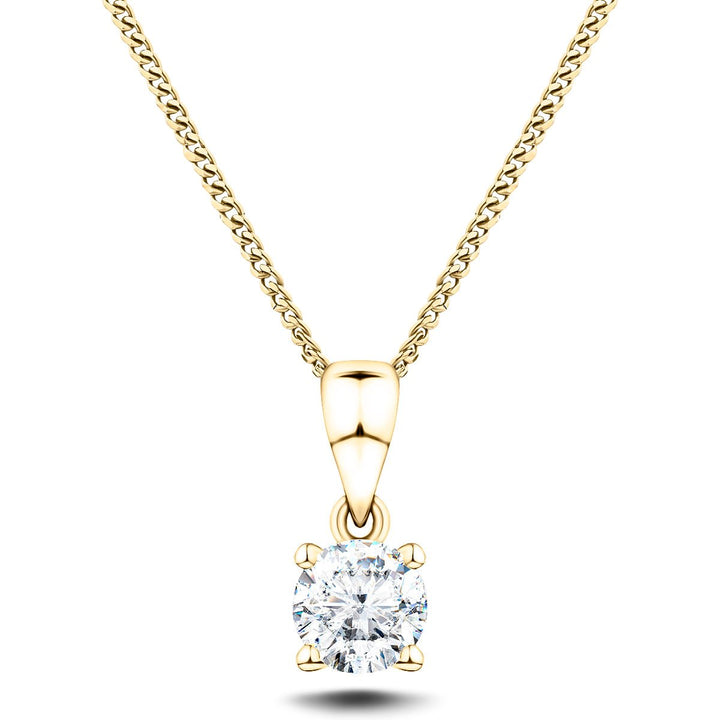
£17,906.00
The Allure of Antique Diamonds
While the implementation of blockchain technology is transforming the diamond industry's transparency, another intriguing aspect of this market lies in the unique charm and age-old mystique of antique diamonds. These precious gems, which have stood the test of time, embody a historical significance that extends beyond mere aesthetics. The appreciation for craftsmanship they demand, with each piece telling a distinct story of a long-gone era, further enhances their allure.
Repurposing antique diamonds is an act of ethical sourcing that aligns with sustainability goals. Instead of mining new stones, we give new life to those already extracted, minimizing environmental impact and preserving natural resources. This is an act of honouring and preserving our shared heritage, a sentiment that resonates with those who seek a sense of belonging and connection to the past.
Furthermore, antique diamonds are known for their value appreciation. Unlike their modern counterparts, they are not evaluated merely on cut, clarity, colour, and carat, but also on their historical context and craftsmanship. This makes them not just a symbol of love and commitment but also a sound investment. Their unique features and provenance make them truly irreplaceable, adding a layer of romantic allure.
£760.00
Fall in love with the timeless elegance of the Nancy Lab Diamond Halo Pear Engagement Ring in 9k White Gold. Expertly crafted to perfection, this ring features a stunning lab-grown pear-shaped diamond surrounded by a halo of glittering accent diamonds.… read moreNancy Lab Diamond Halo Pear Engagement Ring 0.85ct G/VS in 9k White Gold
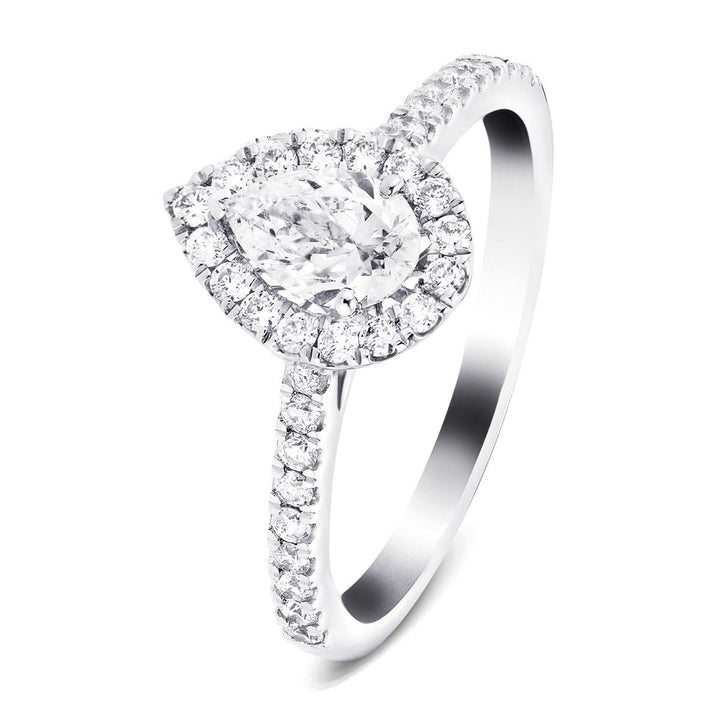
£1,346.00
Rating Diamond Types Ethically
Given the increasing consumer concern for ethical and sustainable choices, it is crucial to consider how different types of diamonds—lab-grown, natural, and antique—rate on these parameters.
Lab-grown diamonds, while potentially offering a solution to the environmental impact of diamond mining, pose their own set of ethical considerations. The importance of transparency in diamond sourcing is paramount, yet these diamonds lack assurance on workers' rights in diamond production and the true environmental cost of their manufacturing processes. On the other hand, the majority of lab-grown diamond production occurs in nations where national lawmakers have enacted legislation, producers are subject to national environmental standards, and pay levels are at least moderately good. These factors serve to make the need for external consideration of ethical and environmental matters far less pressing.
Natural diamonds, on the other hand, bring social and economic benefits to developing countries. Despite the higher environmental cost, these diamonds have a transparent sourcing process and contribute significantly to local economies. The socio-economic and environmental issues accompanying the production of mined diamonds are well known, and almost all jewellery buyers are aware of them. Governments and the diamond industry set up initiatives like the Kimberley Process in response to these worries.
Antique diamonds are perhaps the most ethically sound choice. These diamonds:
• Have no additional environmental impact as they are repurposed
• Ensure workers' rights as they are already cut and polished
• Provide transparent sourcing, as they are sourced from existing jewellery
• Offer a high return on investment due to their rarity
Frequently Asked Questions About the Choice Of Diamond Type
How Can Consumers Verify Whether a Diamond Is Lab-Grown, Natural, or Antique?
Consumers can verify a diamond's origin through diamond certification, using verification methods to determine gemstone authenticity. This process distinguishes synthetic from natural diamonds and involves detailed diamond grading to confirm its characteristics and value.
Are There Any Potential Health or Safety Risks Associated With Wearing Lab-Grown Diamonds?
There are no known health or safety risks associated with wearing lab-grown diamonds. They exhibit the same durability as natural diamonds, and concerns such as diamond allergies or synthetic diamond toxicity are virtually non-existent.
£1,093.00
Make your love story unforgettable with the beauty of the Chloe Lab Diamond Halo Oval Engagement Ring. This stunning ring features a captivating 0.85-carat total weight of diamonds, including an oval cut D/VVS certified diamond at the centre and a… read moreChloe Lab Diamond Halo Oval Engagement Ring 0.85ct D/VVS in Platinum
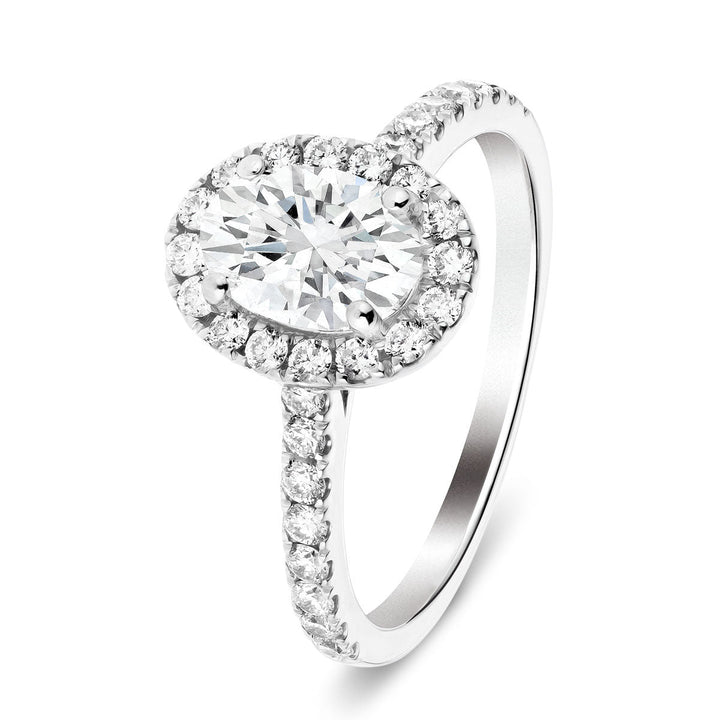
£2,096.00
What Specific Practices Are Involved in the Ethical Sourcing of Natural and Antique Diamonds?
Ethical sourcing of natural and antique diamonds involves practices such as adherence to conflict-free certifications, maintaining fair trade standards, ensuring safe mining conditions, respecting indigenous rights, and promoting diamond recycling.
Can Lab-Grown Diamonds Be Recycled or Reused in the Same Way as Antique Diamonds?
While lab-grown diamonds boast durability, their recycling process is not as sustainable compared to antique diamonds. The reusability of antique diamonds contributes to gemstone sustainability, offering an ethical advantage over synthetic alternatives.
How Does the Introduction of Blockchain Technology Affect the Value or Price of Natural and Antique Diamonds?
Blockchain technology enhances diamond investments by providing transparency and traceability. It influences value by verifying the diamond's origin and journey, thus increasing consumer confidence in the ethical sourcing and authenticity of their diamond purchases.
Finding The Balance Before Making Your Choice
In conclusion, the ethical choice in diamond procurement is multifaceted, encompassing factors such as origin, growth time, certification, price, and sustainability.
Lab-grown diamonds offer a sustainable alternative; natural diamonds can carry socio-economic benefits with undoubted negative environmental impacts, while antique diamonds hold rarity and value.
The adoption of blockchain technology enhances traceability in the industry. This applies to both lab-grown and natural diamonds. By itself, the use of blockchain technology will enhance the image of lab-grown diamonds concerning both ethics and sustainability.
Most people do not have the opportunity to buy antique diamonds to repurpose them into new pieces of jewellery and thus their benefits are beyond the reach of the average buyer of diamond jewellery
Therefore, considering the ethics, sustainability, and investment score is integral to making an informed decision in the diamond market. To some degree, the choice of lab or mined diamonds will depend on how you prioritise the benefits of lab or natural diamonds.
The After Diamonds Choice
Here at After Diamonds, we specialise in jewellery made using lab-grown diamonds. We believe that for most jewellery lovers, lab-grown diamonds represent the best choice. After all, lab diamonds are less costly, have a higher quality pound for pound than mined diamonds, and offer the wearer absolutely all of the beauty and sparkle of a natural stone.
All of our diamond jewellery is designed and handcrafted right here, in the UK. Every item we offer has a lifetime workmanship guarantee and a 30-day return or exchange policy.
Please take a moment to browse our collections of beautiful diamond jewellery. You can see earrings, our necklaces, beautiful engagement rings and much more. We think you will be inspired by what you see, and we will be proud to be of service to you, when you're ready!





